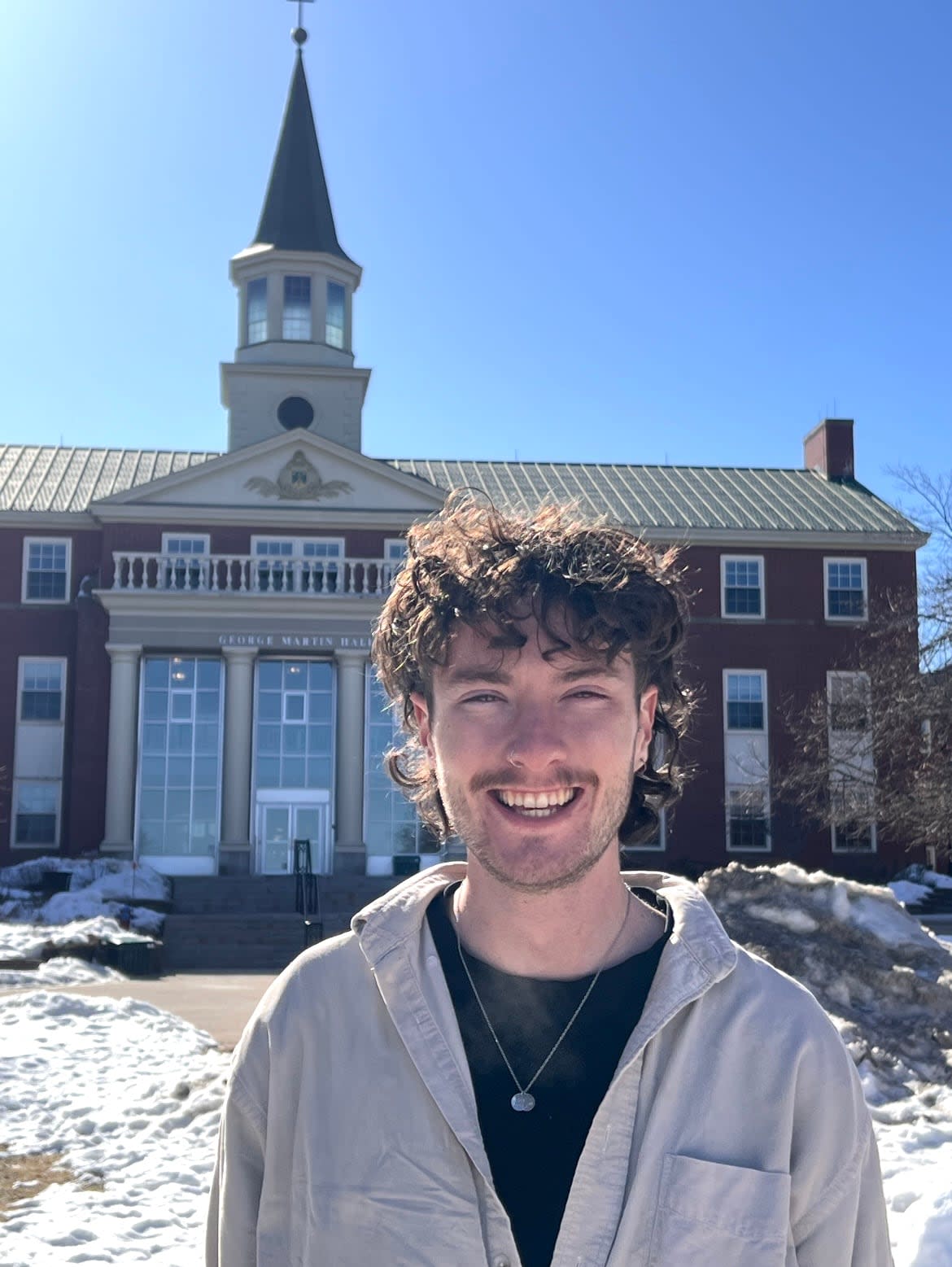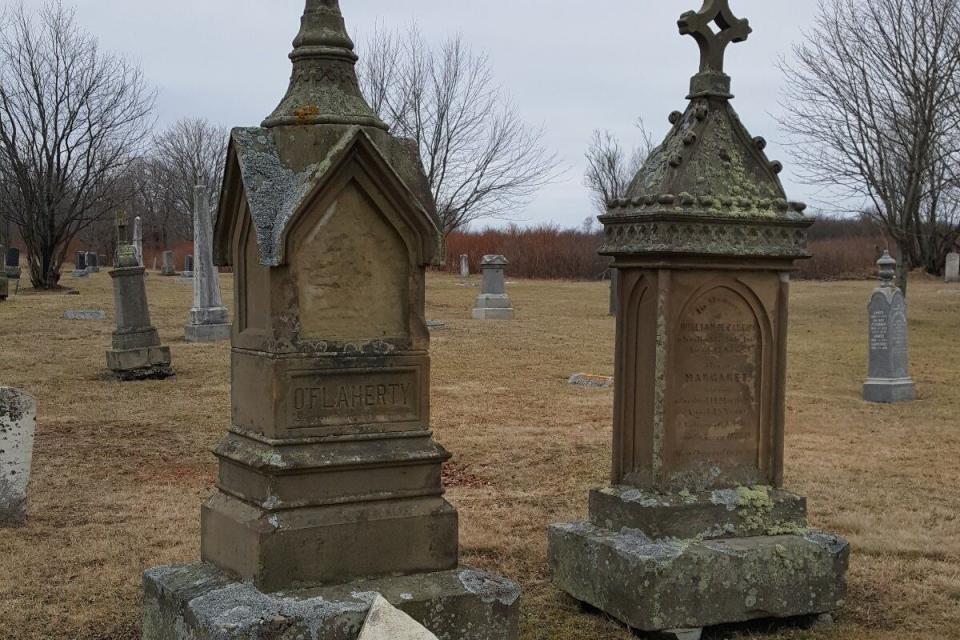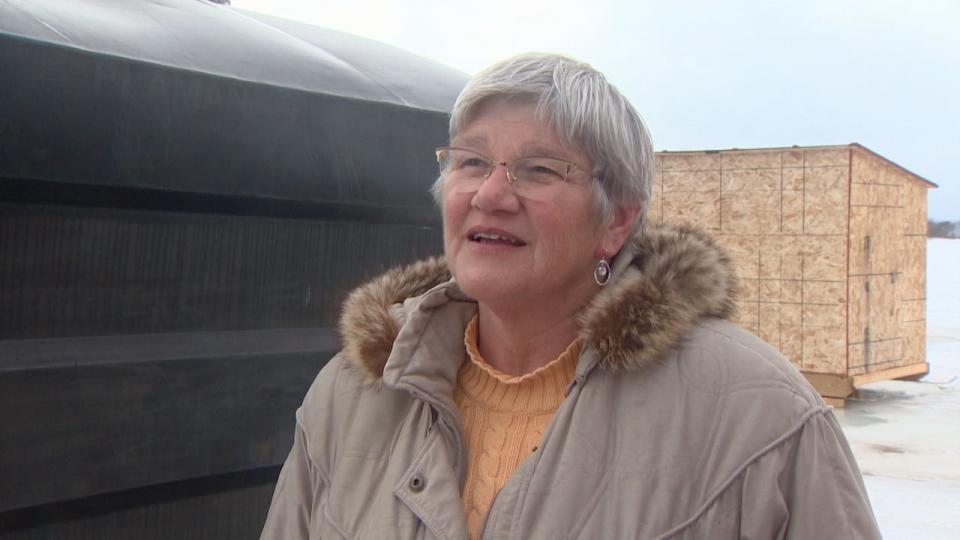Visiting professor promoting Irish language in New Brunswick

A St. Thomas University professor is working to promote the Irish language in the province after moving from Galway, Ireland, in September.
Irish studies professor Gearóid Ó Treasaigh said a phenomenal number of people in the province are thrilled to talk about their Irish background or heritage.
"I find it hard to meet someone here that doesn't have some kind of link to Ireland or some kind of an interest."
Ó Treasaigh was appointed a visiting scholar as part of the Ireland Canada University Foundation's Teagascóirí Gaeilge program, which appoints Irish-language instructors across Canada with help from the Irish government.
He grew up speaking English, but learned the Irish language in school and from visiting the Irish-speaking region of Connemara in western Ireland, for immersion camps, before completing a bachelor's degree in languages and a master's in translation studies.
Irish history in N.B.
Ó Treasaigh said there were different waves of Irish migration to New Brunswick, but he said the first large groups started to come over around the time of the Napoleonic Wars during a period of economic downturn in Ireland.
He said a lot of people would come to places such as Saint John or Miramichi to work in the timber industry.

The majority of the remaining stones in St. Mary's Cemetery bear Irish names. The Saint John chapter of the Irish Canadian Cultural Association of New Brunswick took members of the public to see the cemetery last year. (Submitted by Dave Barnes)
The next big migration was around the time of the Great Famine in the mid 1800s, he said, when people in Ireland suffered starvation and disease.
"By the time that 1871 census came around, 100,000 of the 285,000 people living in New Brunswick would have had an Irish background," said Ó Treasaigh.
But despite deep roots in New Brunswick, there was a sharp decline in Irish-English bilingualism around the 1860s and 1870s, according to Ó Treasaigh.
Language decline
The Irish language, also known as Irish Gaelic or Gaeilge, is a Celtic language and similar to that of Scottish Gaelic or Gàidhlig.
Ó Treasaigh said part of the language's decline was because people didn't understand bilingualism well at the time and tended to believe that you could only speak one language.

Ó Treasaigh said the Irish Society at St. Thomas University was revived this year. Seen here, two students pose with a sign for the society's speed dating event. (Submitted by Gearóid Ó Treasaigh)
He said there was also a lot of anti-Irish sentiment, created in part by the Fenian raids carried out by an Irish Republican organization based in the United States that wanted to secure Irish independence from Britain.
"A lot of the Irish then felt ashamed or felt like they needed to hide their language," said Ó Treasaigh.
He said during the time of World World ll in Canada, telecommunication in Irish or Scottish Gaelic was forbidden, as a matter of national security.
"It kind of goes to show just how people saw their Irishness not as a part of a collective Canadian identity, but as a sign of something foreign or something different, which is a tragedy."
Teaching Irish in Fredericton
And although Ó Treasaigh said he can't necessarily picture the Irish language returning as a community language in New Brunswick, there is plenty of work being done across Canada to promote Irish as a heritage language.
He said this includes work and immersion programs by Gaeltacht an Oileáin Úir in Ontario — the only Gaeltacht, or Irish speaking region, in North America.
In Saint John, the local chapter of the Irish Canadian Cultural Association of New Brunswick is one of the groups working to preserve Irish heritage in the province.

Marijke Blok of the Irish Canadian Cultural Association of New Brunswick, Saint John chapter, said the association holds events on Irish history and music. (Roger Cosman/CBC)
Secretary Marijke Blok said the association has had a few recent sessions on Irish history and music and even brought Ó Treasaigh in for an Irish language lesson.
Last year, she said the association held a public event where they brought a group to St. Mary's Cemetery on Loch Lomond Road where many Irish people are buried.
"We try to sort of stay in touch with the history and make connections with people who are living here who maybe didn't know what their ancestors did," she said of the graveyard trip.
She said the association hopes to do more events relating to the Irish language, but as an Irish person, she said there are bits of the language that exist in her family's everyday phrases.
At St. Thomas University in Fredericton, Ó Treasaigh continues to do his own work to spread the language, including through two Irish-language courses.
He said he also helped to revive the university's Irish Society and in the lead-up to St. Patrick's Day, the society hosted an Irish week, complete with ceilidh dancing and trivia.
Ó Treasaigh said he also does a community class with 25 people from around Fredericton, where in exchange for a food bank donation, the participants can learn the language.
"We have people with an Irish background and people with just an interest in the language," he said.
"A lot of them are people with an Irish background who want to connect to their heritage."
